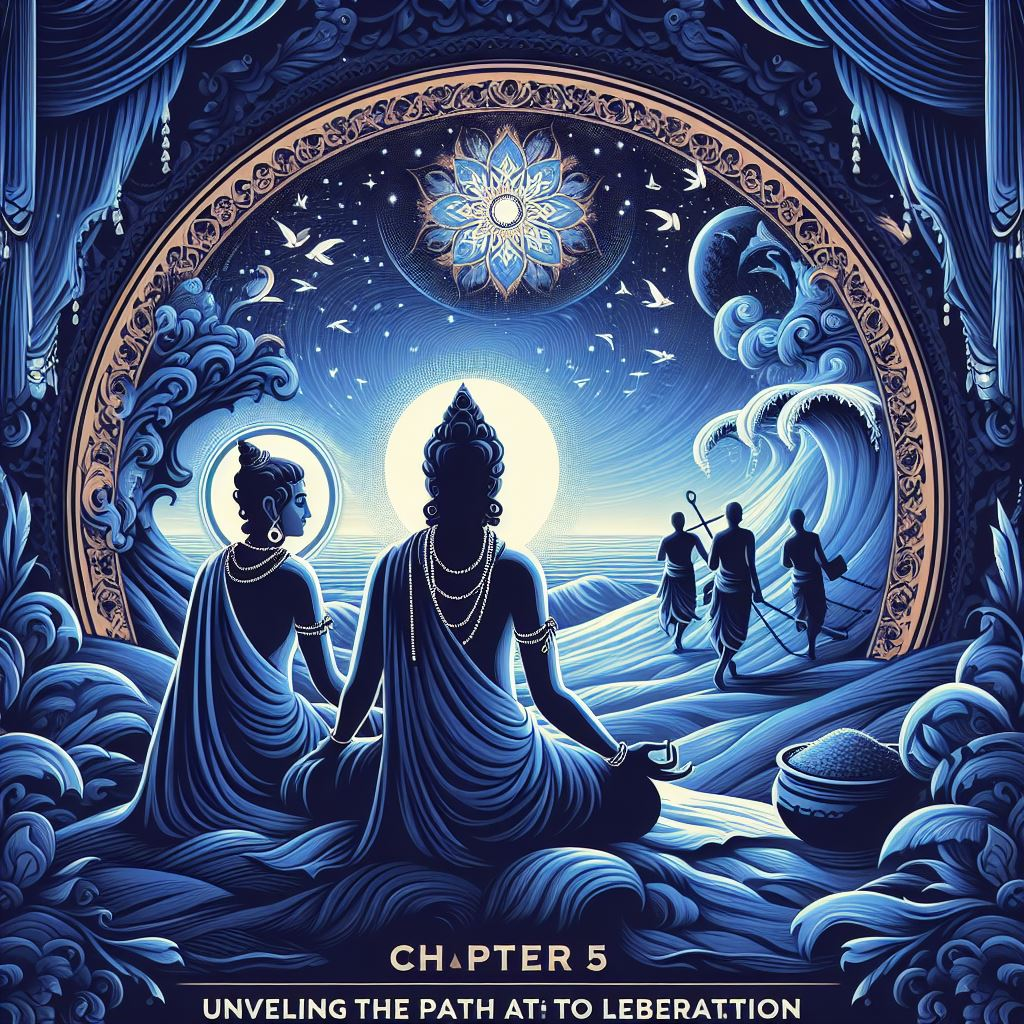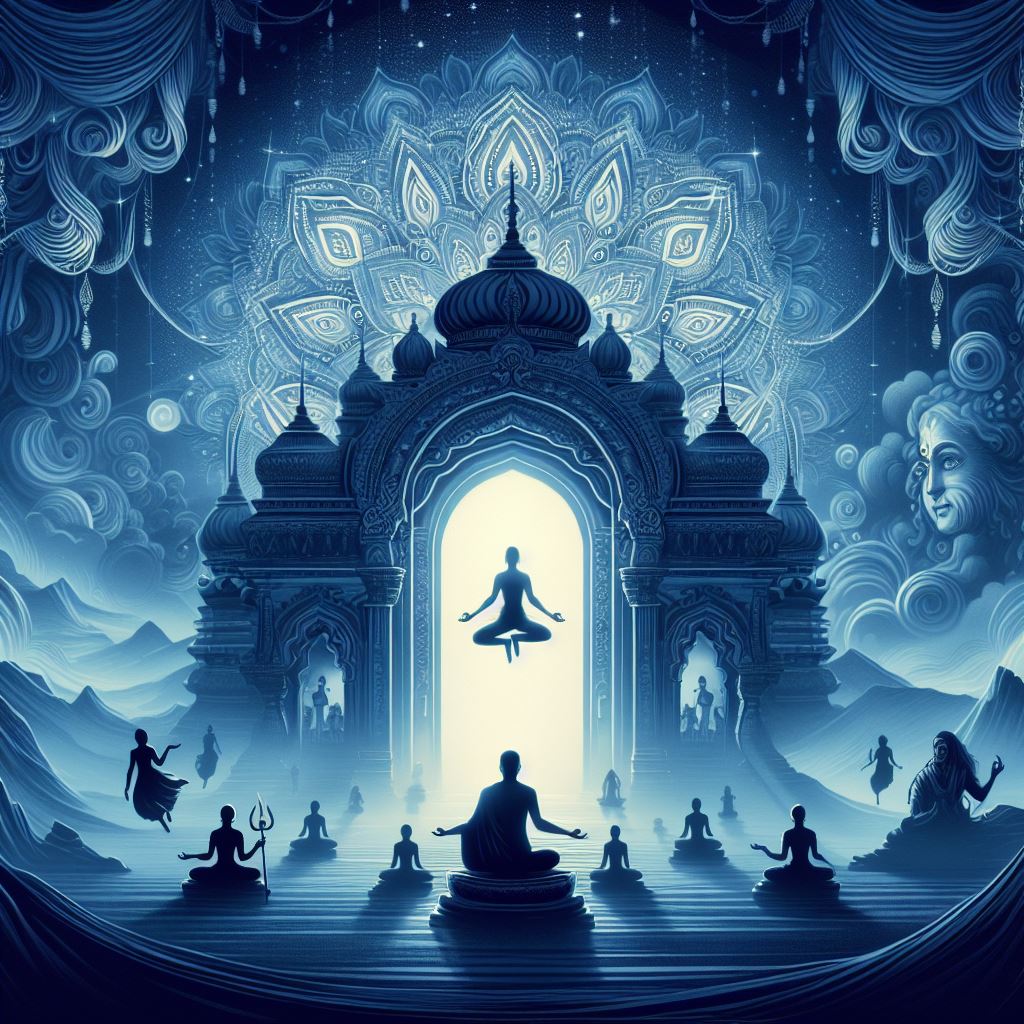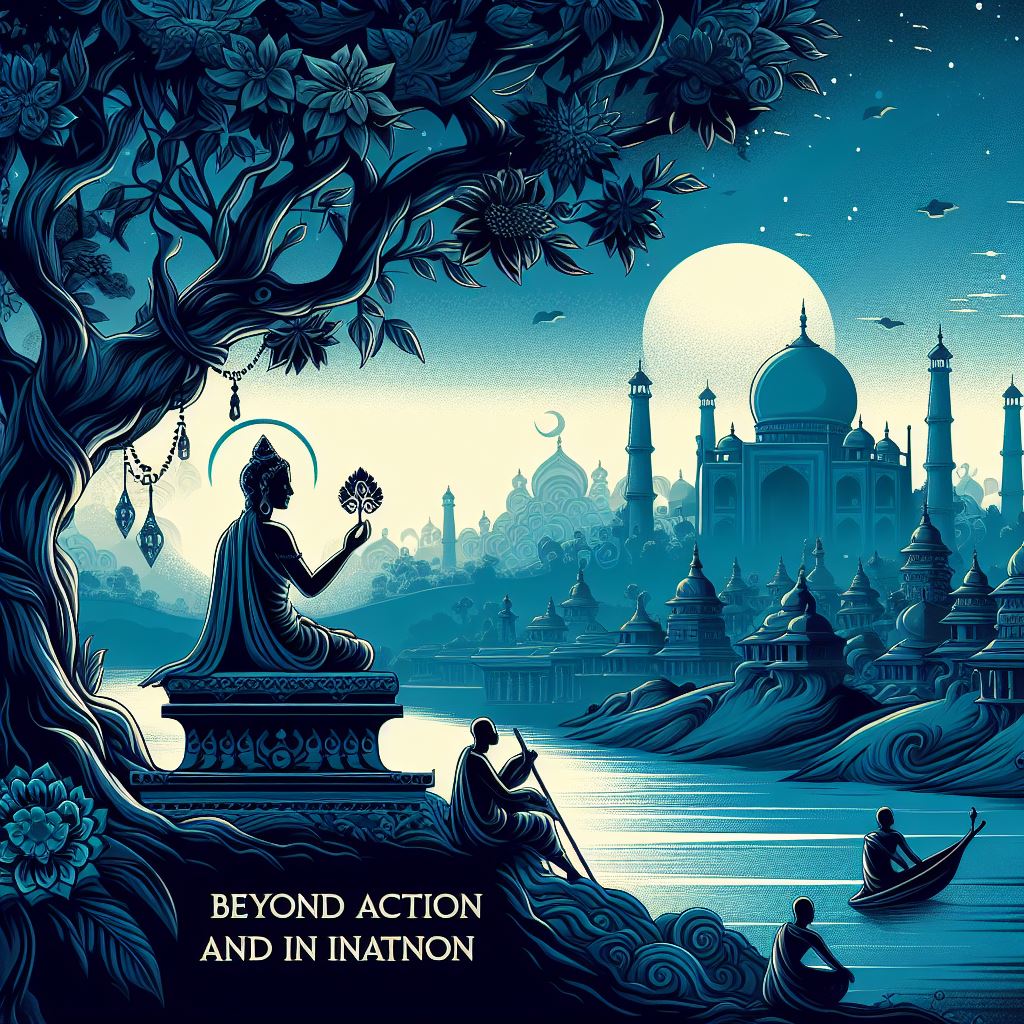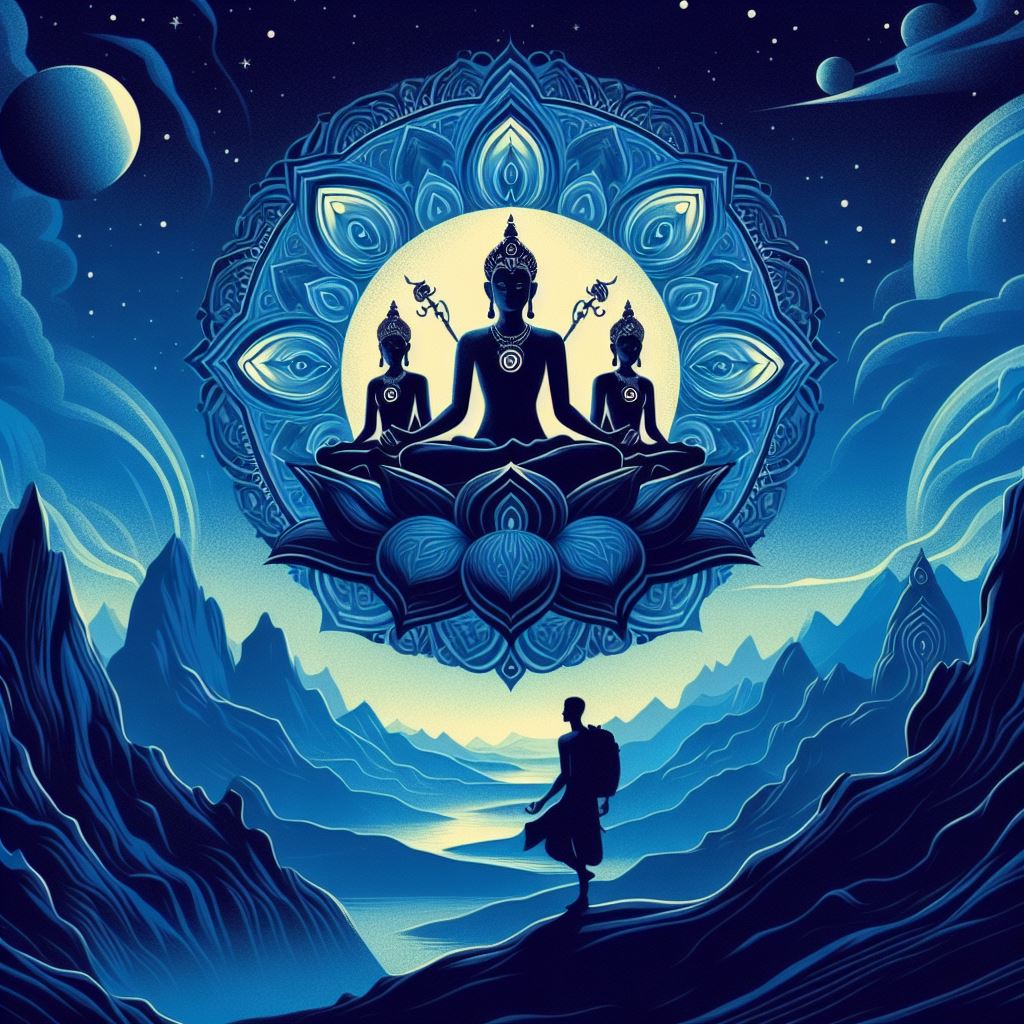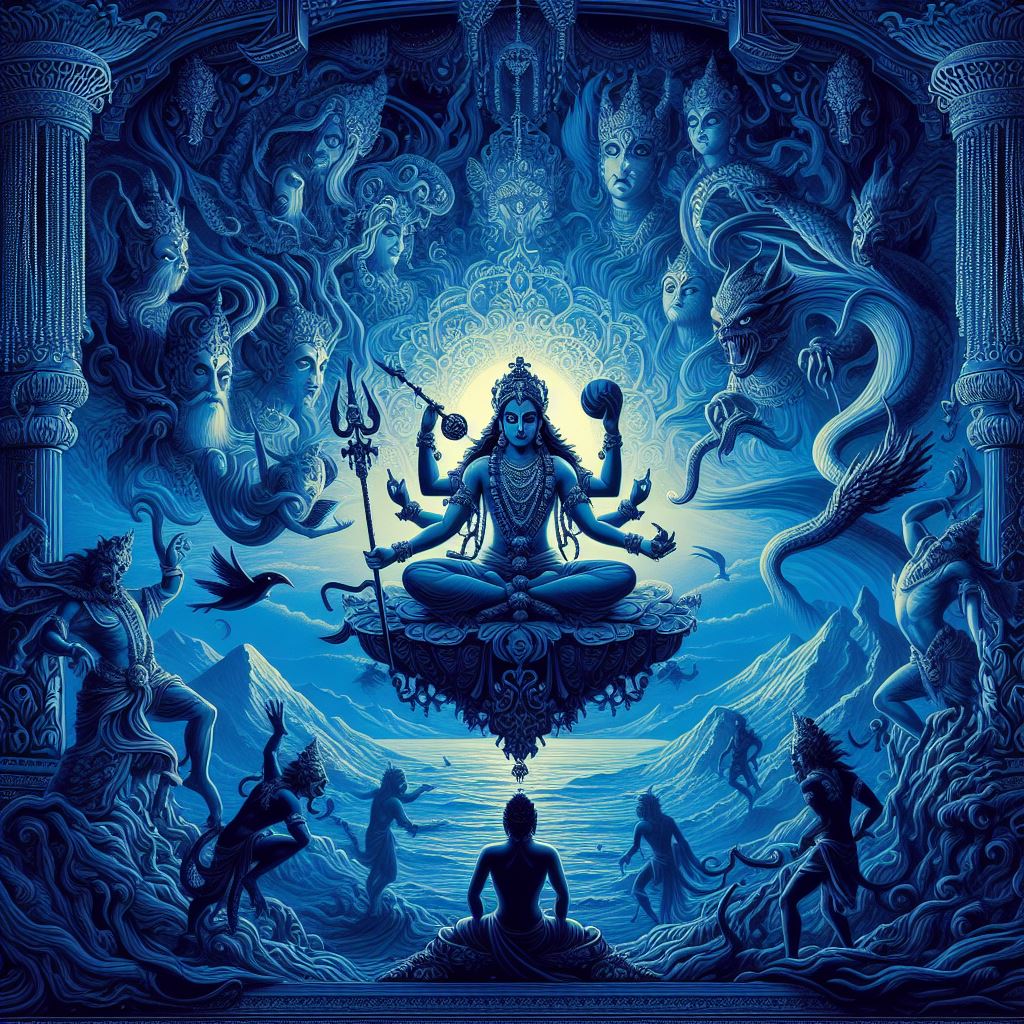Bhagavad Gita: Understanding Chapter 2
Arjuna’s Crisis: A Mirror to Our Struggles
Arjuna, faced with the prospect of slaying his own kin, is consumed by moral and emotional turmoil. His battlefield becomes a metaphor for the internal battles we all face – the battles between duty and compassion, fear and courage, attachment and detachment.
Krishna’s Message in Bhagavad Gita: Unveiling the Eternal Self
Krishna, embodying divine wisdom, responds with teachings that transcend the battlefield. He unveils the concept of the Atman, the eternal and unchanging self. The body, Krishna explains, is a mere garment, cast off and replaced throughout life, while the Atman remains constant. This knowledge becomes the foundation for navigating life’s complexities.
Key Concepts from Sankhya Yoga:
The Duality of Purusha and Prakriti: Krishna introduces the concept of Purusha (consciousness) and Prakriti (material nature). These two principles are eternally intertwined, with Prakriti manifesting the ever-changing world we experience, and Purusha remaining the unchanging witness.
The Gunas: Understanding Our Nature: Prakriti is further explained through the concept of the Gunas – Sattva (goodness, purity), Rajas (passion, activity), and Tamas (inertia, darkness). These Gunas influence our thoughts, emotions, and actions. Understanding our predominant Guna can help us navigate our behavior and make conscious choices.
The Importance of Karma Yoga: Krishna emphasizes Karma Yoga, the path of acting without attachment to the fruits of those actions. By focusing on fulfilling our duties (Swadharma) with dedication and detachment from the outcome, we can find inner peace and avoid the cycle of frustration and disappointment.
Sankhya Yoga for Modern Life:
The wisdom of Sankhya Yoga isn’t confined to ancient battlefields. It offers profound insights for navigating the complexities of modern life:
Finding Purpose in Chaos: By understanding the impermanence of the physical world and the eternal nature of the Atman, we can find a sense of purpose that transcends temporary challenges.
Managing Difficult Emotions: Recognizing the influence of the Gunas allows us to manage difficult emotions with greater awareness. By cultivating Sattva and reducing the influence of Rajas and Tamas, we can make clear-headed decisions and respond effectively to challenges.
Balancing Action and Detachment: The concept of Karma Yoga encourages us to be present and engaged in our activities, while letting go of the need to control the outcome. This can lead to a sense of peace and acceptance in the face of uncertainty.
Exploring Sankhya Yoga Further:
This blog post merely scratches the surface of the profound wisdom found in Bhagavad Gita Chapter 2. Here are some ways to delve deeper:
Read different translations and commentaries: There are numerous translations of the Bhagavad Gita available, each offering a unique perspective. Consider exploring commentaries by renowned scholars to gain a deeper understanding of the text.
Join a study group or online forum: Participating in discussions with others who are interested in the Bhagavad Gita can provide valuable insights and different interpretations.
Practice Yoga and Meditation: The Bhagavad Gita is closely linked to the practice of Yoga. Yoga postures (asanas) and meditation techniques can help us embody the teachings of Sankhya Yoga and cultivate inner peace.
The Bhagavad Gita Chapter 2, Sankhya Yoga, is a timeless treasure trove of wisdom. By applying its teachings to our daily lives, we can navigate life’s challenges with greater clarity, purpose, and inner peace.
- गीता में स्थितप्रज्ञ:
- भगवद् गीता में समत्व भाव
- Bhagavad Gita Chapter 1: Arjun Vishad Yoga
- Bhagavad Gita Chapter 2: Sankhya Yoga
- Bhagavad Gita Chapter 3: Karma Yoga
- Bhagavad Gita Chapter 4: Jnana Karma Sanyasa Yoga
- Bhagavad Gita Chapter 5: Karma Sanyasa Yoga
- Bhagavad Gita Chapter 6: Atma Samyama Yoga
- Bhagavad Gita Chapter 7: Jnana Vijnana Yoga
- Bhagavad Gita Chapter 8: Akshara Brahma Yoga
- Bhagavad Gita Chapter 9: Raja Vidya Raja Guhya Yoga
- Bhagavad Gita Chapter 10: Vibhuti Yoga
- Bhagavad Gita Chapter 11: Vishvarupa Darshana Yoga
- Bhagavad Gita Chapter 12: Bhakti Yoga
- Bhagavad Gita Chapter 13: Kshetra Kshetrajna Vibhaga Yoga
- Bhagavad Gita Chapter 14: Guṇa Traya Vibhaga Yoga
- Bhagavad Gita Chapter 15: Purushottama Yoga
- Bhagavad Gita Chapter 16: Daivāsura Sampad Vibhāga Yoga





